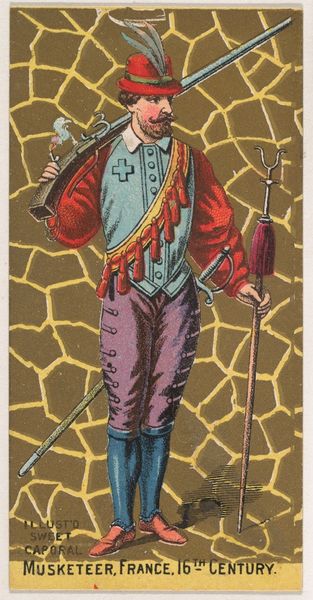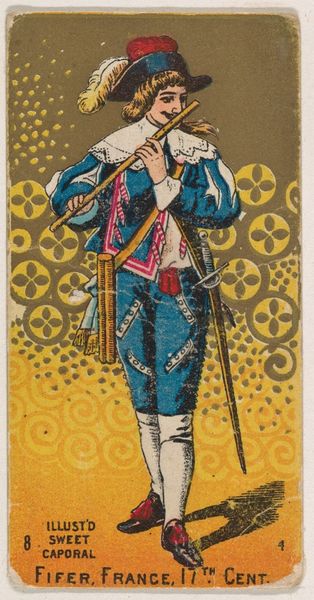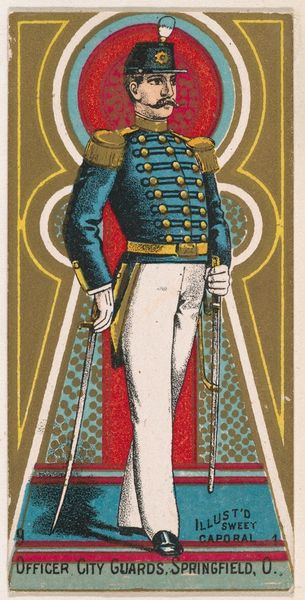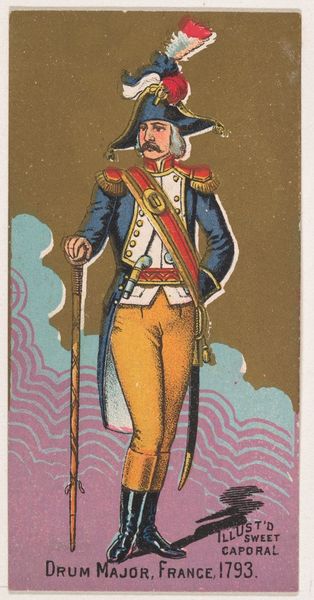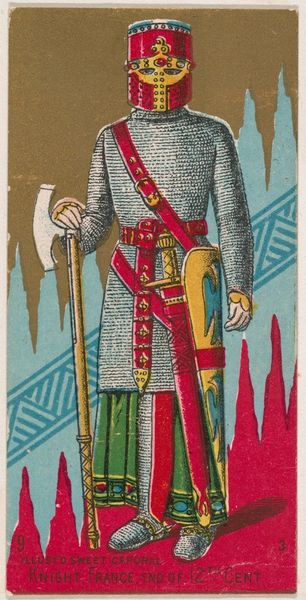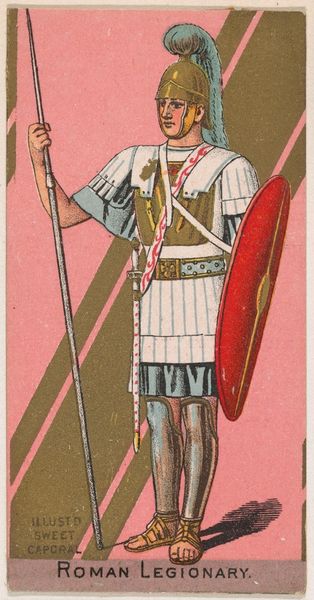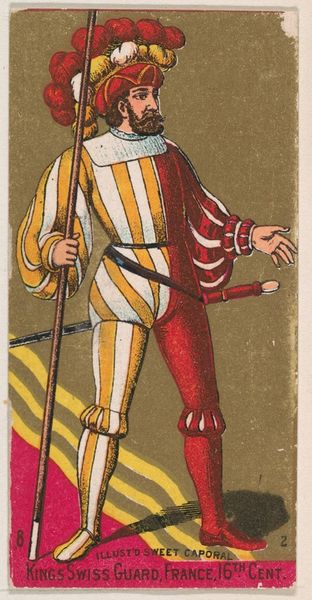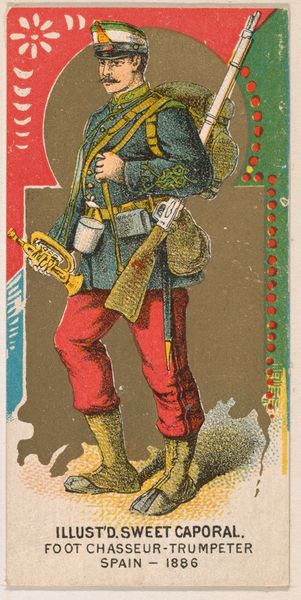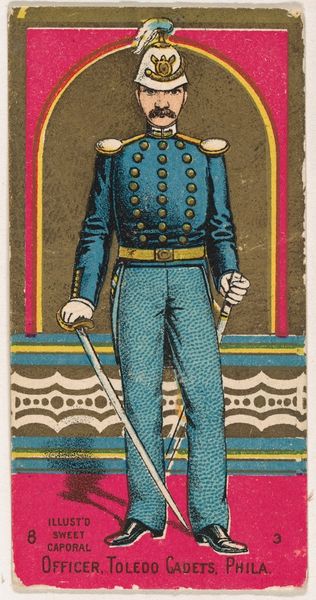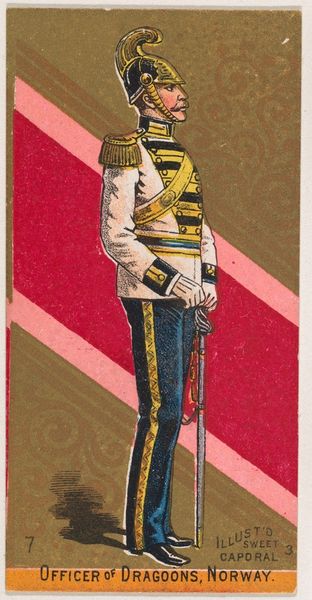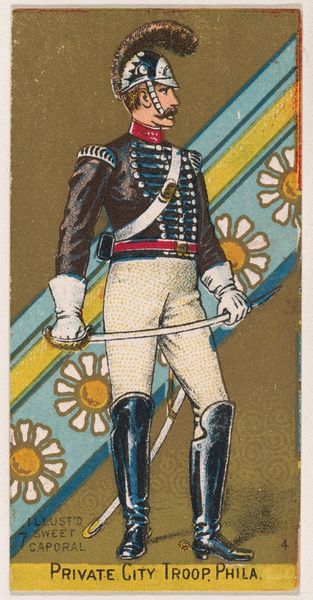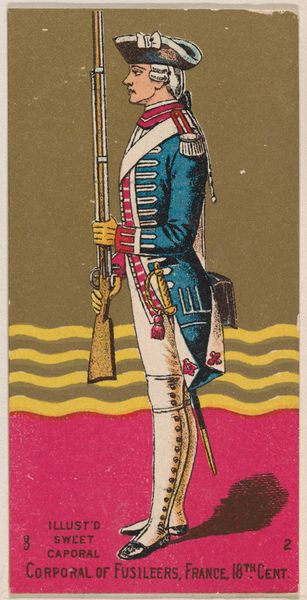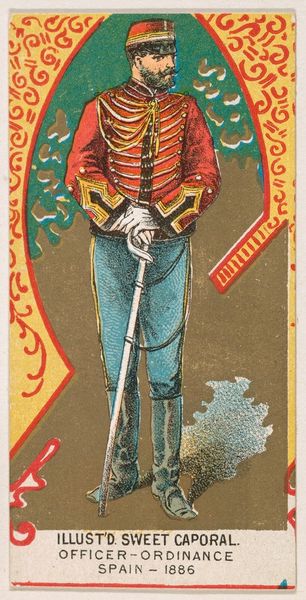
Officer, France, 18th Century, from the Military Series (N224) issued by Kinney Tobacco Company to promote Sweet Caporal Cigarettes 1888
0:00
0:00
drawing, print
#
drawing
# print
#
caricature
#
caricature
#
history-painting
Dimensions: Sheet: 2 3/4 × 1 1/2 in. (7 × 3.8 cm)
Copyright: Public Domain
Curator: This image really jumps out at you, doesn’t it? Editor: It does, but in a way that feels a little… cheeky? Is this some kind of commentary on the military? The proportions seem a little off. Curator: It's "Officer, France, 18th Century," a print from 1888, originally included in the "Military Series" issued by Kinney Tobacco Company as a promo for Sweet Caporal Cigarettes. A very different world for accessing art! Editor: A cigarette card! So the drawing itself served a very particular purpose in the late 19th century, functioning as both collectible and advertisement. I suppose the appeal lay in these small, affordable items. The drawing and printmaking, however basic, became commodities. Curator: I see what you mean. Still, there's something playful about it, something more than just a sales pitch. It’s not striving for realism, but that slight exaggeration... that's where the fun is. He looks a bit pompous, perhaps? The outfit's almost comical, though historically accurate. Editor: Comical indeed! All those carefully rendered stripes and fleurs-de-lis are more important than the individual represented, more valuable even, in terms of capitalist aesthetics. I am curious about what informed their choice to reproduce this historical military attire on what I suppose was cheap cardboard stock. Curator: Well, imagine collecting these, perhaps even trading with your friends. It's a miniature peek into history, and the stylized rendition gives it a distinct flair. Almost like a costume drama distilled into a tiny card. It brings history down to a relatable scale. Editor: And how does the context of cigarette production and consumption—the association of military grandeur with smoking—influence our view? I suppose the consumption and even waste surrounding the materials in a product meant for disposal shapes the life cycle of images and meanings themselves. Curator: Perhaps a way to experience the power that history often obscures. It certainly does invite us to ponder just how much of history and meaning get tied to the most everyday things. Editor: Exactly. I think examining the artwork and its function together adds to a deeper perspective than, say, approaching only from art history’s most respected forms. Curator: Definitely. Something worth pondering about where our passions meet daily life and all the implications there.
Comments
No comments
Be the first to comment and join the conversation on the ultimate creative platform.

